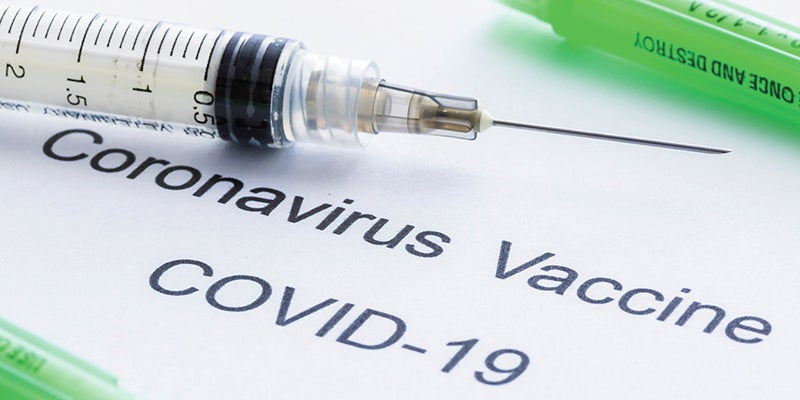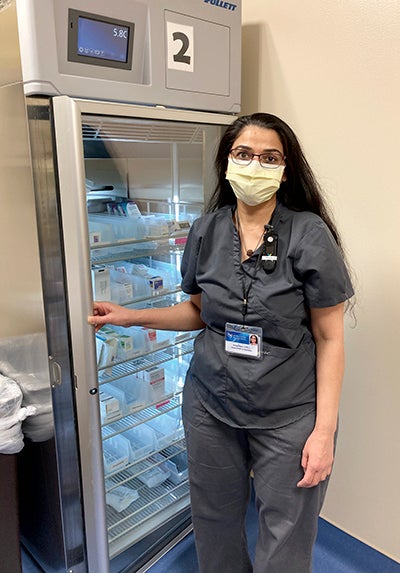SE Minnesota prepares for first round of COVID-19 vaccinations
Published 7:01 am Saturday, December 19, 2020

- Metro Image
|
Getting your Trinity Audio player ready...
|
Priority given to healthcare staff
Beginning Monday, health officials hope to start administering the first coronavirus vaccinations in Southeast Minnesota.
According to Dr. Andrew Bradley, MD, head of the Mayo Clinic COVID-19 Task Force, Mayo Clinic Rochester is expected to receive about 2,900 vaccines the first week and 4,900 the following week.
“Across every state, there will be centers that receive the vaccine and a ‘hub and spoke’ model,” Bradley said. “(Mayo Clinic Rochester) will be a hub, and some of the vaccines we receive we will be shipping to other centers so that they can do their own vaccination efforts.”
According to Mower County Health and Human Services Community Health Division Manager Pam Kellogg, Olmsted Medical Center and Winona Health are also considered “hubs” and will receive about 975 vaccines each.
Bradley said vaccinators had to perform mandatory state guided training this week before being allowed to issue vaccines.

Sima Patel, a pharmacy technician in the Mayo Clinic Health System – Austin pharmacy, will be one of those to disperse of the COVID-19 vaccines. Photo courtesy of Mayo Clinic Health System-Austin
According to the Center for Disease Control and Prevention, the two vaccines, created by Pfizer and Moderna, must be administered in two doses. Both doses must be from the same product and will be administered 21 to 28 days apart, depending on the vaccine.
Because availability of vaccines will be limited in the beginning, the Minnesota Department of Health is following guidelines set by the CDC’s Advisory Committee on Immunization Practices to determine who can receive the vaccine first. This group has been dubbed “Phase 1a.”
“In wave one of the vaccine, we will be providing vaccines to those physicians and healthcare professionals who provide direct care for patients with COVID, emergency room staff, long-term care facilities, people who work in the morgue in the pathology office, emergency medical staff and urgent care centers,” Bradley said. “Right now, there are lists being made of people who fall into those categories.”
Bradley noted that Mayo is taking measures to prevent every staff member from being vaccinated in one day.
“This is because we know, particularly with the second dose, there are measurable incidents of feeling slightly unwell – fevers, chills and body aches that can last a day or so – and we don’t want all of our staff to experience that at the same time,” he said. “There will be staggering within departments and across departments.”
He added that he believes it will take 2-3 weeks to complete wave one vaccinations, assuming they receive vaccines at the pace they hope to receive them.
On a local level, Kellogg said Mower County Public Health is receiving 100 doses of the Moderna vaccine, which will be used to vaccinate EMS personnel in Mower County. Public Health staff will be vaccinated the week of Dec. 28.
Rick Thiesse, senior communications media specialist for Mayo Clinic Health System, said that as supplies increase in 2021, the program will expand to include more health care personnel and broader patient populations.
“We are working with public health officials to coordinate distribution in the community,” he said. “We encourage everyone to educate themselves on the safety and efficacy that clinical trials have demonstrated and consider accepting the vaccine.”
According to Erin McHenry, MDH COVID-19 communications specialist, the MDH has not yet made decisions about vaccination priorities beyond Phase 1a. Bradley, however, noted that it is likely every healthcare center will prioritize.
“It’s anticipated that every healthcare center will prioritize accordingly with second and third, all the way up to seventh wave prioritizations that will get to you average person with no risk factors who is otherwise healthy,” he said “We anticipate that it will take several months to get to that level. The last estimate I’ve heard is that will be March or April.”
Bradley added that the timeline could change based on whether or not more vaccines get approval and if there are any issues with the supply chain. He also noted that new recommendations and guidelines could also alter that timeline.
As future prioritization becomes clearer, Mayo Clinic will employ a public notification strategy when patients are eligible to receive the vaccine.
“Exactly what that is going to look like, I don’t know yet because we’re not doing it yet,” Bradley said. “I do know for employees who fall into wave one, people whose turn it is are receiving an email and are asked to respond to that email with their willingness to receive the vaccine. If they want to receive the vaccine, they are scheduled an appointment time.”
The MDH said the vaccine will be provided at no cost. Because the vaccine was approved via Emergency Use Authorization, it cannot be required by law.
Bradley acknowledged that there are concerns from some about receiving the vaccine, noting that pregnant women, women who are lactating, and patients who are on immunosuppressive medications for other medical reasons have not been specifically studied in the trials, though he does not believe federal guidance requires withholding vaccinating those individuals.
According to MDH Spokesman John Schadl, because the vaccines received emergency use authorization, not full FDA approval, it is unknown how often vaccination will be required.
“Whether or not booster shots are going to be required in the future at more intervals, that’s going to take more research to know,” he said.
Bradley and Schadl also noted that full immunity is not immediate and usually takes two weeks after the second dose is administered, meaning it’s possible a person could be infected with the virus just before or just after vaccination and get sick.
“Those people who have received vaccinations should still adhere to public health recommendations – universal masking, washing your hands frequently, avoiding congregating in public places with other unmasked individuals,” Bradley said. “All infection control precautions will remain in place for the foreseeable future.”
Despite this, Bradley said that based on test trials, the vaccines appear “very, very safe.”
“What we know about its efficacy is that it can reduce the incidents of symptomatic disease by about 95 percent compared to the non-vaccinated groups,” he said. “Given the excellent safety profile, given the excellent efficacy, I think everybody needs to make an informed decision about whether they want to take it or not.”
Phase 1a
Under Phase 1a of the MDH’s initial vaccination plan, the first vaccines will be administered to the following.
Phase 1a – First Priority
• Hospitals: All personnel working in dedicated COVID-19 units, ICU, emergency departments, designated COVID-19 urgent care clinics. (Includes, but not limited to: nurses and nursing assistants, doctors, advanced practice providers, respiratory therapists, lab/tech staff, and environmental services/maintenance staff.)
• Long-Term Care Facilities (skilled nursing facilities and nursing homes): All personnel working in these facilities.
• Emergency Medical Services Personnel: People providing direct patient care as part of the EMS system. This includes: Air Ambulance Pilots, Ground Ambulance Drivers, Physicians, Physician Assistants, Nurses, and those personnel certified or registered by the EMSRB: Paramedics, Advanced Emergency Medical Technicians, Emergency Medical Technicians, and Emergency Medical Responders.
• COVID testers: Personnel providing testing at large community testing centers.
COVID community vaccinators: Public health vaccinators and those administering COVID-19 vaccine in Phase 1a.
• Long-Term care Residents: Residents living in skilled nursing facilities and nursing homes (including veterans’ homes)
Phase 1a – Second Priority
• Hospitals: All personnel providing direct patient services or handling infectious materials and not included in the first priority group.
• Long-Term Care Facilities (assisted living facilities/housing with services with an arranged Home Care Provider): All personnel working in these facilities.
• Urgent care settings: All personnel providing direct patient services or handling infectious materials and not included in first priority group.
• Dialysis centers: All personnel providing direct patient services or handling infectious materials.
• Long-term care residents: Residents living in Housing with services with an arranged Home Care Provider, otherwise known as Assisted Living (including veterans’ homes)
Phase 1a – Third Priority
• Health Care Personnel: All





